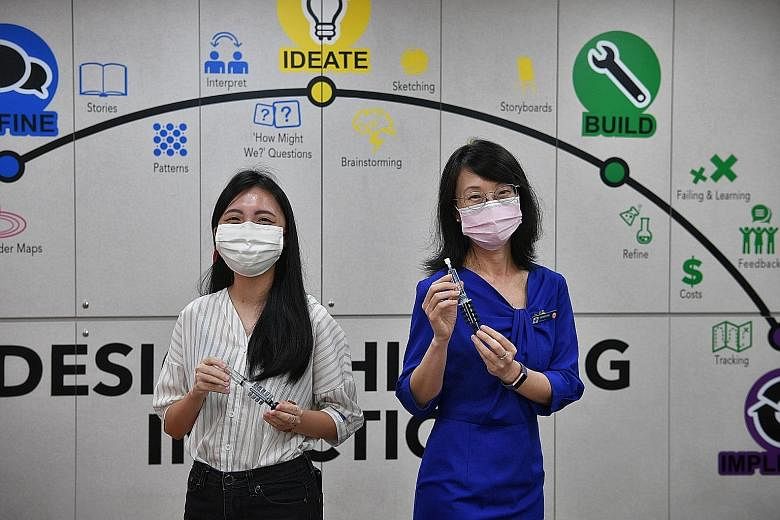A syringe stopper being used in the emergency department of several hospitals in Singapore started life as a student project in 2017.
The device reduces the risk of users administering the wrong dosage of medication.
Called the Syringe Brake, the device is a series of 1 millilitre tabs attached to the plunger of a syringe.
A user who wants to administer 2ml of medication would break two tabs on the device at the narrow end of the syringe, which is used both for diluting and administering medication.
When the right dosage has been delivered, the device stops more medication from flowing through.
The development of the Syringe Brake follows a collaboration between Changi General Hospital (CGH) and Singapore University of Technology and Design (SUTD).
Explaining the need for such a device, CGH and SUTD said: "It is crucial to reduce the risk of medication errors by ensuring that the user administers the correct dose with correct labelling and adequate communication."
Syringe Brake was developed by Ms Felicia Soon, an SUTD alumna, and Ms Yasmin Ng, a senior principal pharmacist at CGH.
The project was initiated during an eight-week course that Ms Soon undertook in 2017 as part of her engineering product development degree programme.
The course, which has since been extended to 13 weeks, involves final-year SUTD engineering students applying their engineering design background to develop medical and healthcare solutions.
Ms Soon, now 25, has since graduated and is doing further studies. She came up with a prototype for the stopper, which was further developed by Ms Ng, 45.
The hospital and SUTD said the device then underwent trials in CGH and various other hospitals in Singapore in 2018, and was finally brought to market by CGH the next year.
Since then, it has been used in the emergency departments of various hospitals, said CGH and SUTD.
Ms Soon said that because the device is separate from the syringe, it allows for a wider usage.
For example, it can be used for intravenous bolus applications, where medication is rapidly sent into the bloodstream.
Ms Ng added: "With existing processes to ensure medication safety and the use of Syringe Brake, CGH's accident and emergency patient care areas went without an intravenous morphine bolus error for close to three years from 2017 to 2020."

